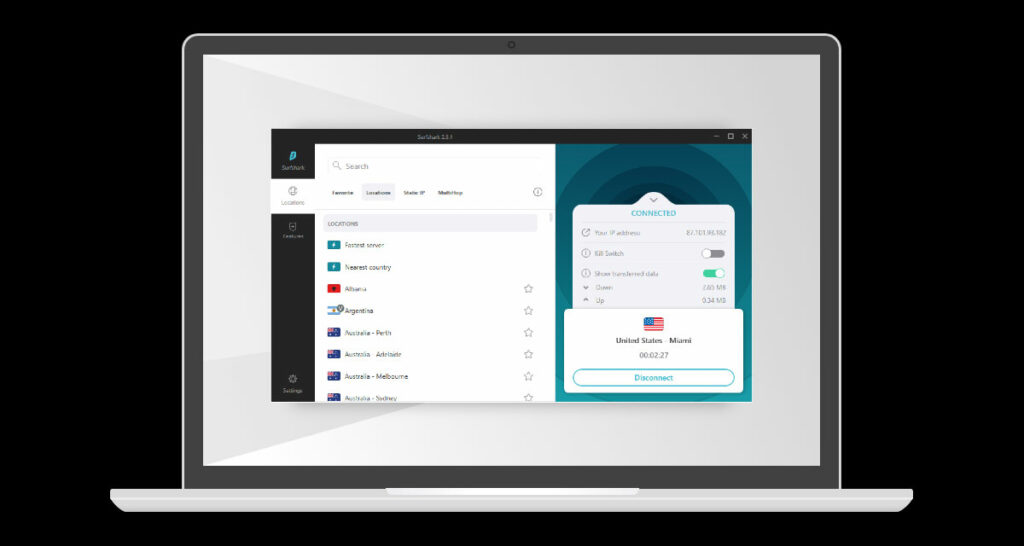Free public Wi-Fi may seem convenient, but it often comes with hidden risks like data breaches, malware, and identity theft. Using a VPN can encrypt your connection, safeguarding your personal information and providing a secure browsing experience.
In our hyper-connected world, public Wi-Fi has become a lifeline for millions of people. Whether you’re grabbing coffee, waiting for a flight, or studying at the library, free Wi-Fi offers the convenience of staying connected. However, while you may not be paying with your wallet, there’s a hidden cost to using public Wi-Fi—your privacy and security.

Let’s dive into the global Wi-Fi trends, explore the hidden risks, and reveal how a VPN can save you from the dangers lurking behind free Wi-Fi.
Public Wi-Fi: A Global Trend
With an explosion of free Wi-Fi hotspots worldwide, urban areas are filled with opportunities to connect. According to WiFi Map, the availability of free public Wi-Fi is extensive:
– North America: 1,477,776 free Wi-Fi spots
– Europe: 3,112,795 free Wi-Fi spots
– Asia Pacific: 4,208,771 free Wi-Fi spots
In major cities like Seoul, there are over 94,000 hotspots, and in Japan, public Wi-Fi plays a vital role in emergency communications. However, for every new hotspot, a new vulnerability emerges, making it critical to understand the risks.
The Risks of Public Wi-Fi
Free Wi-Fi is convenient, but it comes with substantial security risks. These unsecured networks are prime targets for hackers looking to steal sensitive information like passwords, banking details, or even identity. Here are some of the most common threats:
1. Man-in-the-Middle Attacks: Hackers intercept communication between your device and the network, gaining access to sensitive information like login credentials or personal messages.
2. Unencrypted Networks: Many public Wi-Fi networks don’t encrypt your data, leaving you vulnerable to anyone nearby who can intercept it.
3. Rogue Hotspots: These are fake Wi-Fi networks set up by cybercriminals that appear legitimate but are designed to steal your information.
4. Session Hijacking: Hackers steal session tokens, which can give them access to your accounts as if they were you.
The VPN Solution: How It Protects You

A Virtual Private Network (VPN) offers a robust layer of protection when using public Wi-Fi. Here’s how it shields you from the risks:
– Encryption: VPNs encrypt your data, meaning even if a hacker intercepts it, they cannot read it. This makes attacks like man-in-the-middle much harder to execute.
– Secure Connection: By encrypting your internet traffic, VPNs protect you from unencrypted networks, ensuring that your personal information remains private.
– Rogue Hotspot Protection: If you accidentally connect to a rogue hotspot, a VPN prevents hackers from accessing your data, keeping your information secure.
– Session Hijacking Prevention: VPNs encrypt your session tokens, making it difficult for hackers to hijack your accounts.
Surfshark VPN: Extra Layers of Protection

While VPNs offer essential security for public Wi-Fi, using a robust service like Surfshark VPN adds extra features for optimal protection:
– CleanWeb: Blocks ads, trackers, malware, and phishing attempts.
– Kill Switch: Automatically disconnects you from the internet if the VPN drops, ensuring your data isn’t exposed.
– Dynamic MultiHop: Routes your traffic through multiple VPN servers for double encryption.
With a 30-day money-back guarantee, there’s no risk in trying Surfshark VPN. Boost your security and protect what matters most.
Why Take the Risk?
In a world where hackers are constantly targeting public Wi-Fi, using a VPN is a no-brainer. Whether you’re browsing, sending emails, or logging into your bank account, protecting your information with a VPN ensures you aren’t paying for “free” Wi-Fi with your data.
Your privacy is worth more than a few minutes of convenience. Stay safe, stay secure—use a VPN.
You may also like to check out:
- iOS 18 Hidden Features For iPhone And iPad [100+ List]
- Download: iOS 18 RC IPSW Links, OTA Update For iPhone Released
- Download: iOS 18.1 Beta 4 OTA Update, IPSW Links For iPhone Released
- iOS 18.1 Beta 4 Download & Expected Release Date
- iOS 18 Final Version Has An Official Release Date
You can follow us on X, or Instagram, subscribe to our YouTube channel and even like our Facebook page to keep yourself updated on all the latest from Microsoft, Google, Apple, and the Web.

